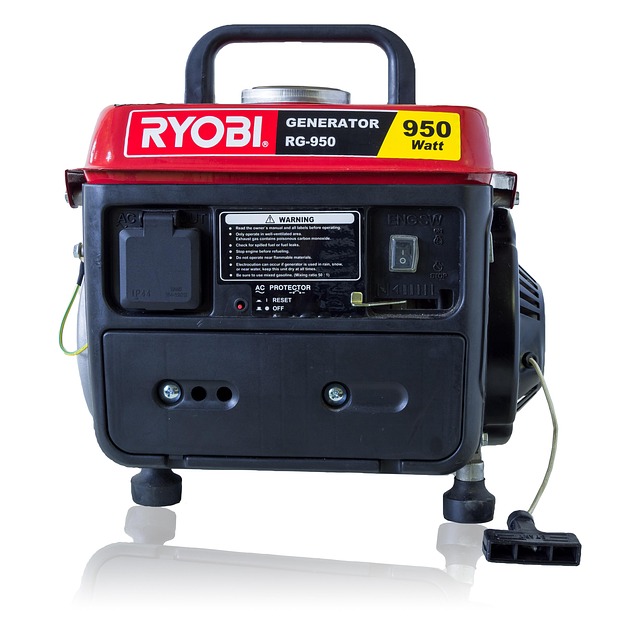How Generators Work and How They Are Installed
Generators are machines that provide electricity when the main power is off. Understanding how they operate and the steps involved in installing them helps people learn about their use at home or in small buildings. This article explains the process in simple, easy-to-follow terms for anyone curious about generators.

How do generators produce electricity?
Generators operate on the principle of electromagnetic induction. At their core, generators consist of an engine that turns a rotor inside a stator. The rotor contains a magnetic field, while the stator houses copper wire coils. As the rotor spins within the stator, it creates a moving magnetic field that induces an electric current in the copper coils. This process, known as electromagnetic induction, is the fundamental mechanism by which generators produce electricity.
What are the main components of a generator?
A typical generator system comprises several key components:
-
Engine: The primary source of mechanical energy, typically powered by diesel, gasoline, propane, or natural gas.
-
Alternator: Converts mechanical energy from the engine into electrical energy.
-
Fuel System: Stores and delivers fuel to the engine.
-
Voltage Regulator: Maintains a steady output voltage regardless of load variations.
-
Cooling and Exhaust Systems: Manage heat and emissions produced during operation.
-
Control Panel: Monitors generator performance and allows for manual control.
-
Battery Charger: Keeps the starting battery charged and ready for use.
Understanding these components is essential for proper maintenance and troubleshooting of generator systems.
What types of generators are available for home backup power?
For home backup power, two main types of generators are commonly used:
-
Portable Generators: These are smaller, mobile units that can be moved as needed. They typically run on gasoline and require manual startup and connection to appliances or a transfer switch.
-
Standby Generators: Also known as whole-house generators, these are permanent installations that automatically activate during power outages. They are usually powered by natural gas or propane and can supply power to the entire home.
Each type has its advantages and considerations, such as power output, fuel efficiency, and installation requirements. Homeowners should carefully evaluate their needs and consult with professionals to determine the most suitable option.
How is a portable generator set up?
Setting up a portable generator involves several steps:
-
Placement: Position the generator outdoors, at least 20 feet away from the house, with the exhaust pointing away from windows and doors.
-
Fueling: Fill the generator with the appropriate fuel type, following manufacturer guidelines.
-
Starting: Use the pull-cord or electric start to activate the generator.
-
Connecting: Use heavy-duty, outdoor-rated extension cords to connect appliances directly to the generator’s outlets.
-
Load Management: Monitor the generator’s capacity and avoid overloading by prioritizing essential appliances.
-
Shutdown: Turn off all connected devices before shutting down the generator to prevent damage.
Safety is paramount when using portable generators, including proper ventilation and careful fuel handling to prevent carbon monoxide poisoning and fire hazards.
What is involved in standby generator installation?
Installing a standby generator is a complex process that typically requires professional expertise:
-
Site Assessment: Determine the appropriate location for the generator, considering local codes and manufacturer specifications.
-
Permitting: Obtain necessary permits from local authorities.
-
Fuel Line Installation: Connect the generator to a natural gas line or propane tank.
-
Electrical Connections: Install a transfer switch and connect the generator to the home’s electrical system.
-
Concrete Pad: Pour a concrete foundation to support the generator unit.
-
Generator Placement: Securely mount the generator on the prepared pad.
-
System Testing: Perform comprehensive tests to ensure proper operation and safety.
-
Final Inspection: Schedule an inspection by local authorities to verify compliance with codes and regulations.
Professional installation ensures safety, compliance, and optimal performance of the standby generator system.
What are the costs associated with generator installation?
Generator installation costs can vary significantly based on the type of generator, power output, and installation complexity. Here’s a general overview of cost ranges:
| Generator Type | Average Cost Range | Installation Cost Range |
|---|---|---|
| Portable Generator | $500 - $2,000 | $0 - $500 |
| Standby Generator | $3,000 - $20,000 | $2,000 - $10,000 |
Prices, rates, or cost estimates mentioned in this article are based on the latest available information but may change over time. Independent research is advised before making financial decisions.
Factors affecting costs include generator size, fuel type, installation location, and any necessary electrical or plumbing work. Portable generators generally have lower upfront costs but may require manual setup during outages. Standby generators offer convenience and automatic operation but involve higher initial investment and installation expenses.
In conclusion, generators provide essential backup power for various applications. Understanding how generators work, the available types, and the installation process helps in making informed decisions about backup power solutions. Whether opting for a portable or standby system, proper installation and maintenance are crucial for ensuring reliable performance and safety during power outages.




